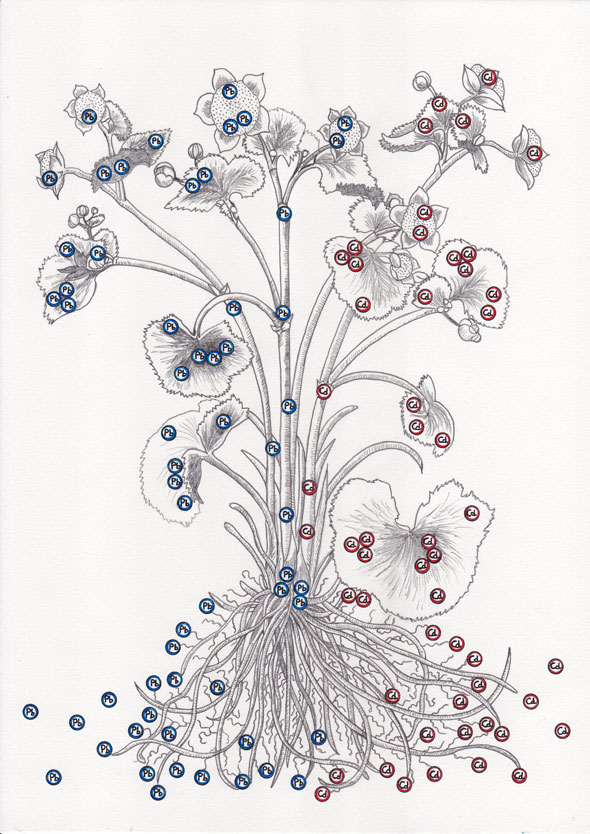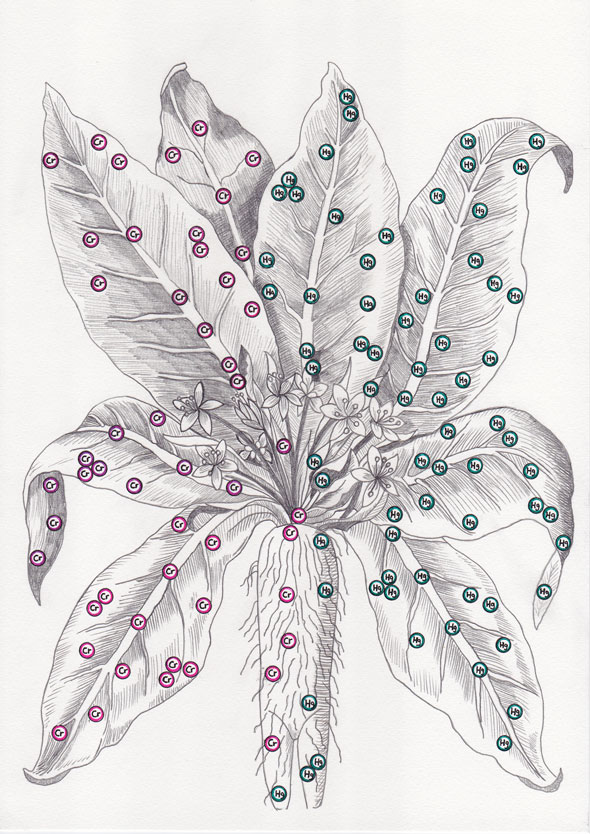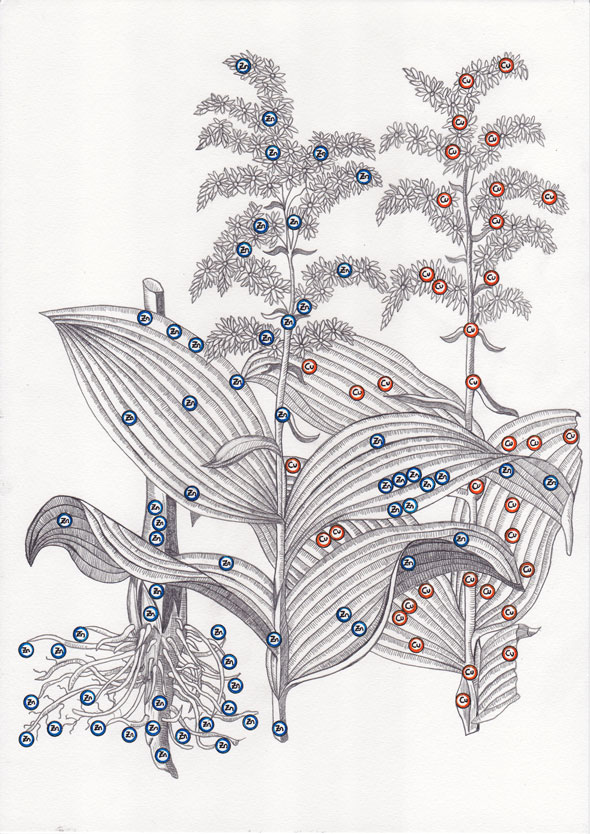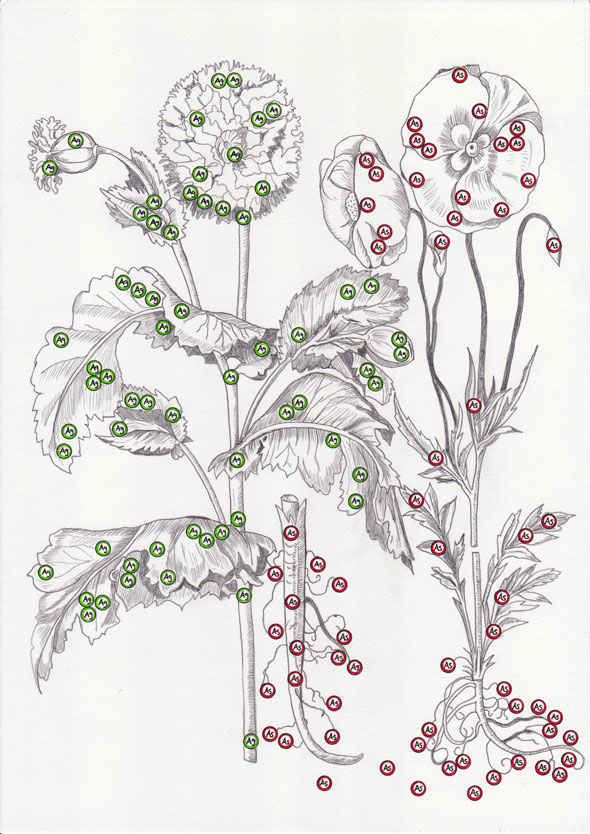Phytoremediation
Series of 4 ink and graphite drawings on paper
30 x 40 cm. each
2017
Phytoremediation is a process of decontamination of soils through the natural action of plants. It consists of taking advantage of the innate capacity of some plants to biologically treat land treated with pesticides and loaded with heavy metals. These toxic substances are absorbed by the root of plants and metabolized by chemical reactions. In this way, they manage to repair the damages caused by the industrial activities of the human being and help to recover the environmental balance.
Starting from this concept and taking as a direct reference the ancient scientific illustration, these drawings are based on the engravings codex Hortus Eystettensis, produced in Bavaria by the German botanist Basilius Besler at the beginning of the 17th century.
The proposal shows descriptive examples of plants that are assimilating certain harmful chemical compounds. Represented with the proper symbols of the periodic table of the elements, in the drawings we can identify a high concentration of heavy metals such as lead (Pb), cadmium (Cd), chromium (Cr), mercury (Hg), zinc (Zn), copper (Cu), silver (Ag) and arsenic (As)..
——

——

——

——

——